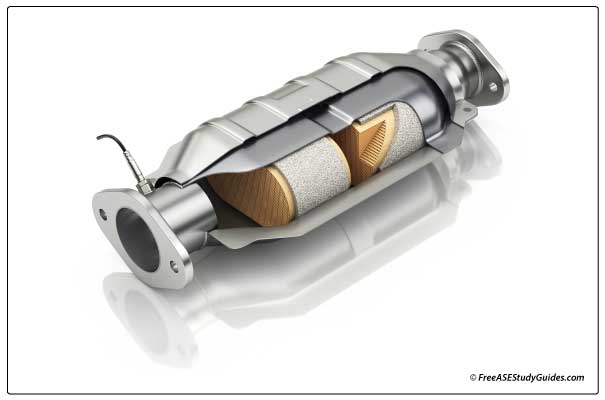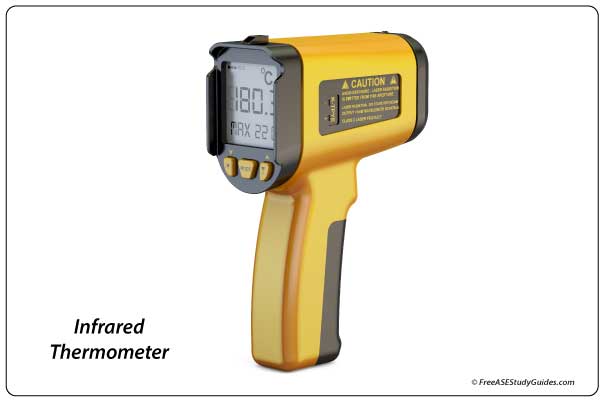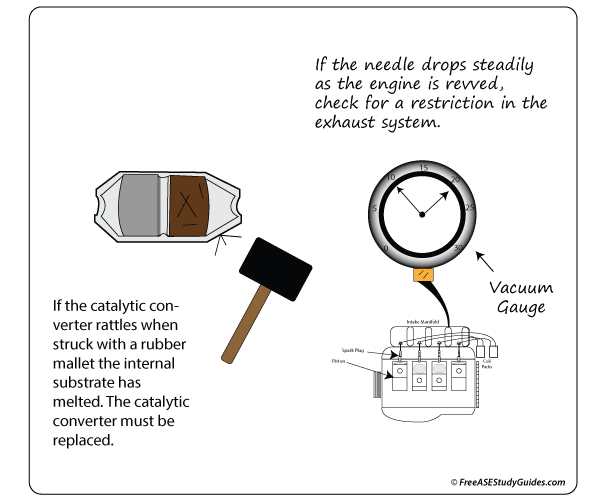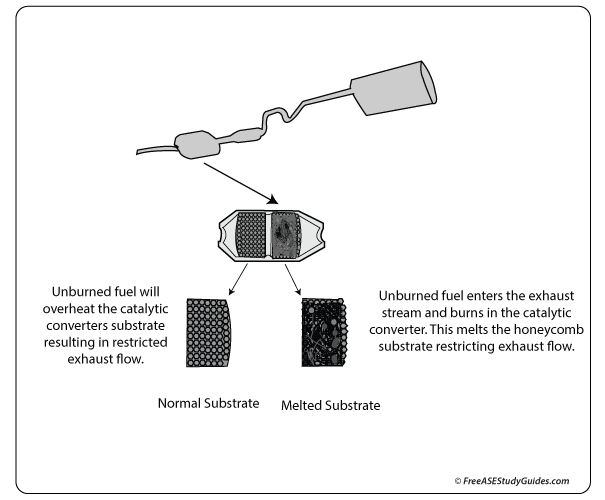Catalytic Converter and Restricted Flow

When an engine's air-fuel ratio is rich, the catalytic converter is overworking. The excessive fuel ignites in the exhaust and catalytic converter instead of the combustion chamber, causing it to overheat.
Most new model vehicle exhaust systems have pre-catalytic converters that begin to operate sooner than the main catalytic converter. The catalytic converter starts to work at around 600° F and runs at approximately 1200° ~ 1600° F.

Measuring the temperature of the inlet and outlet helps indicate a faulty converter. An overheated converter will discolor and exceed temperatures of 2000° F. There will be a 150° ~ 200° F difference between the inlet and outlet ports.

Misfiring caused by faulty spark plugs, coils, and mechanical wear produces a rich air-fuel ratio. This heat damages the substrate and causes it to melt, restricting exhaust flow and causing excessive backpressure. As a result, the substrate can become coated, loose, and rattle. If the converter rattles when tapped with a plastic hammer, it must be replaced.

A combustion engine is like an air pump; air drawn into the intake manifold must flow through the exhaust system. Too much resistance results in a substantial horsepower loss. The exhaust backing up into the engine's combustion chamber will severely affect the engine's performance.
Back Pressure Testers

Back pressure test kits test for blocked catalytic converters, piping, and mufflers. The adapters screw into the threads in the exhaust for the upstream oxygen sensor. Restrictions in the exhaust and clogged catalytic converters result in stalling, horsepower loss, and poor engine performance.